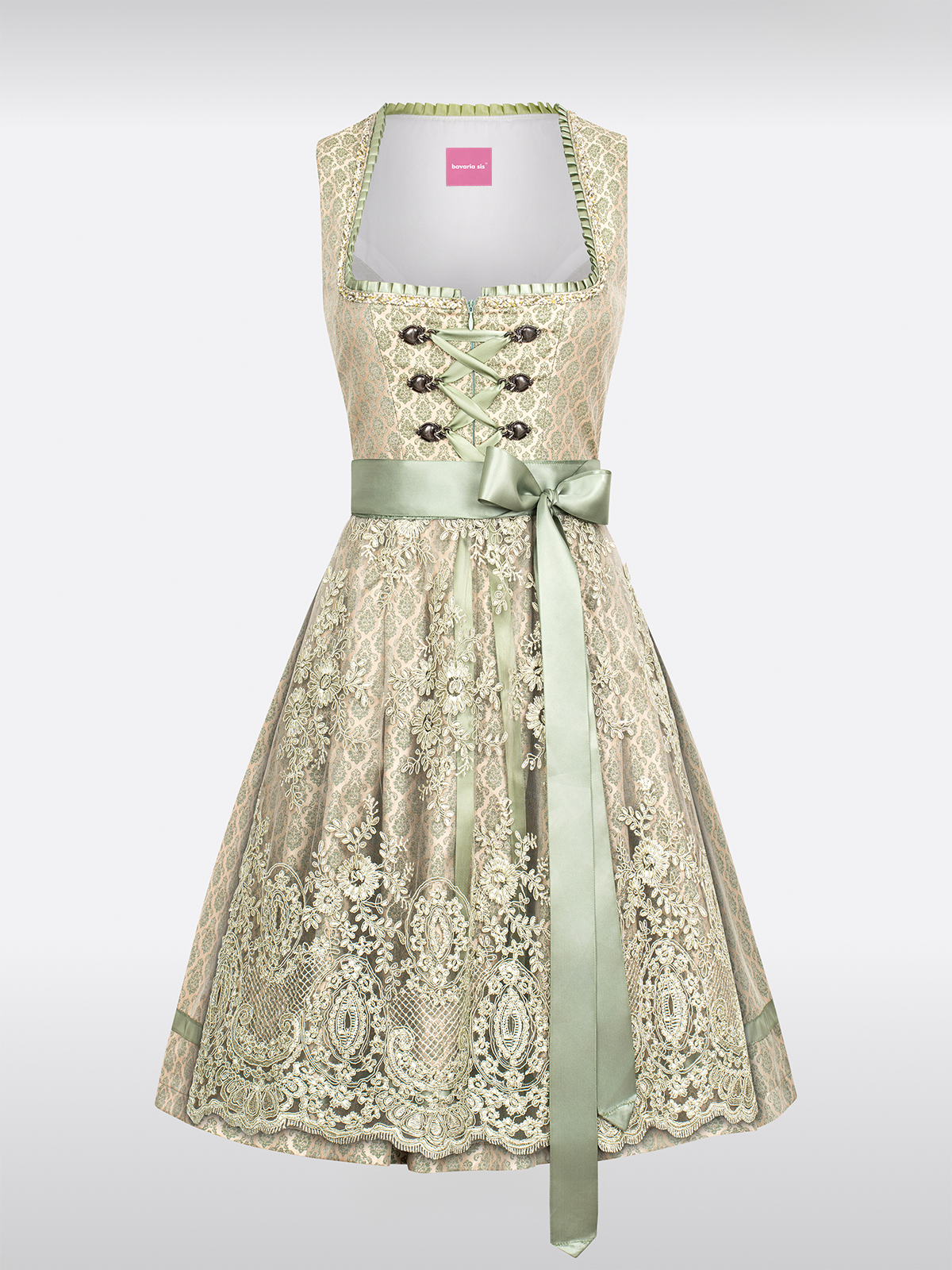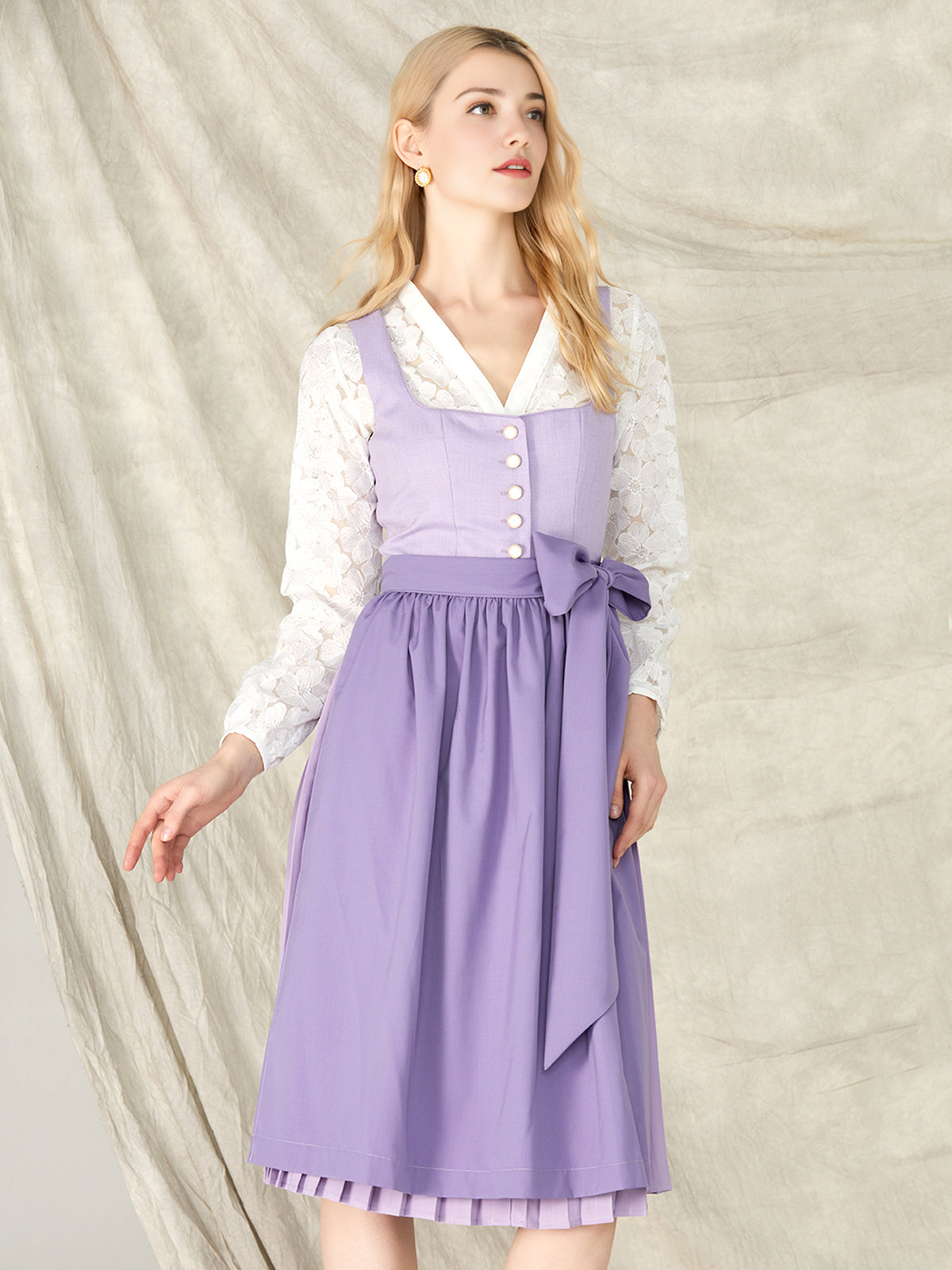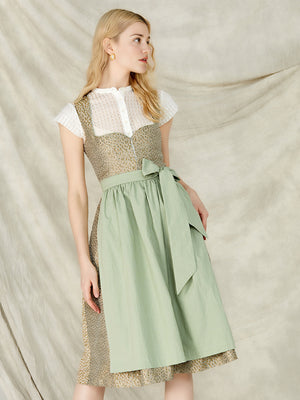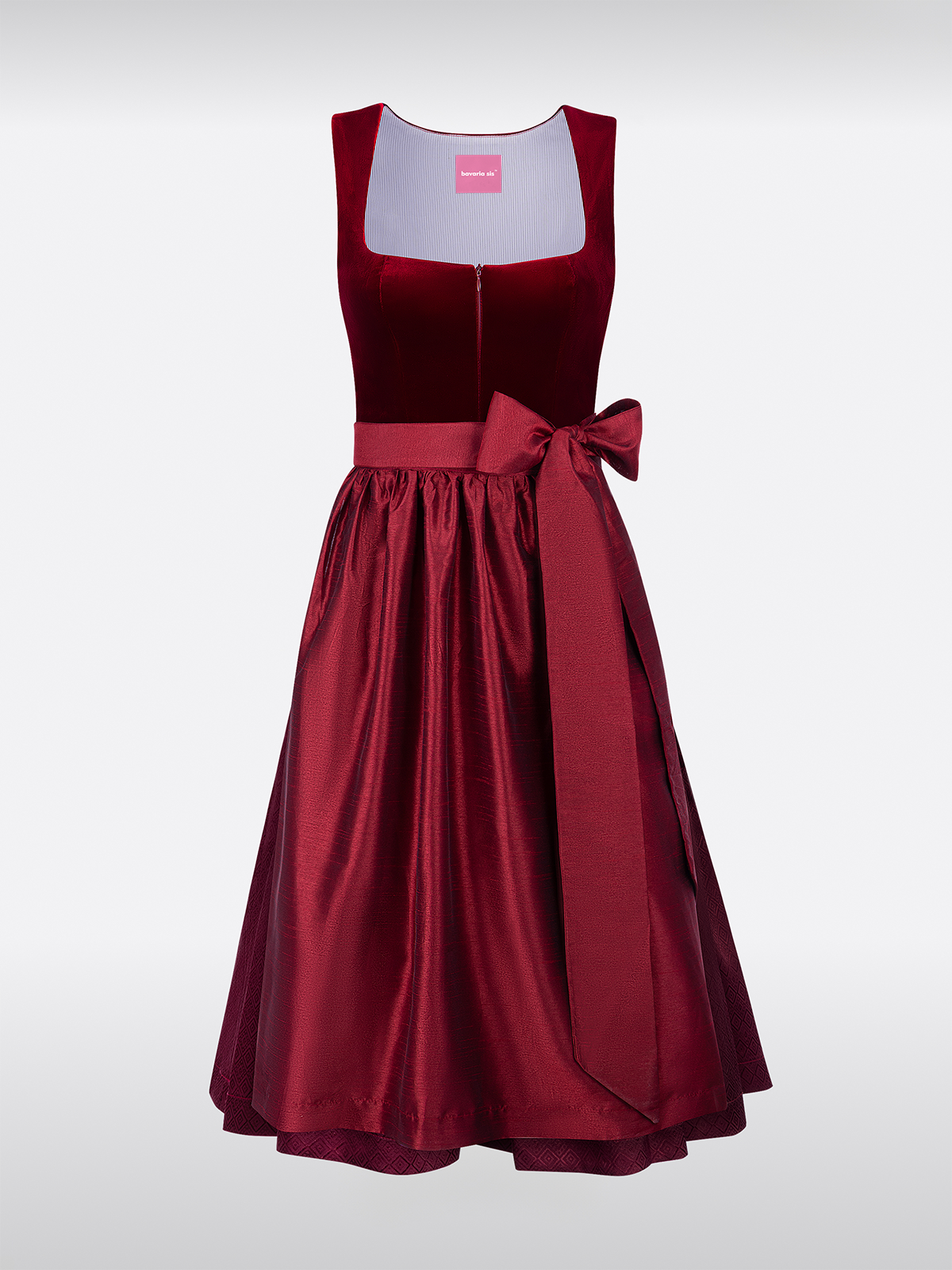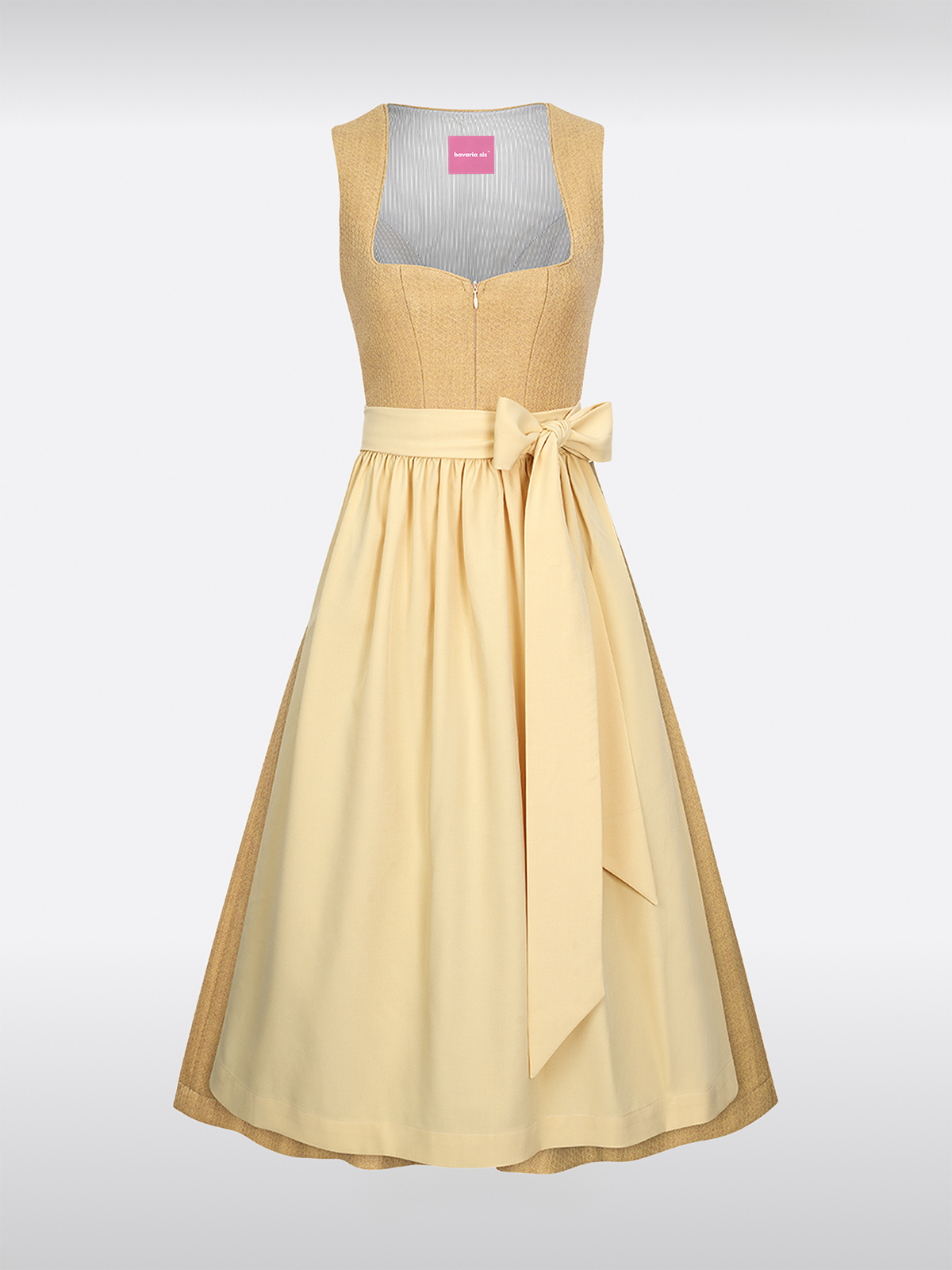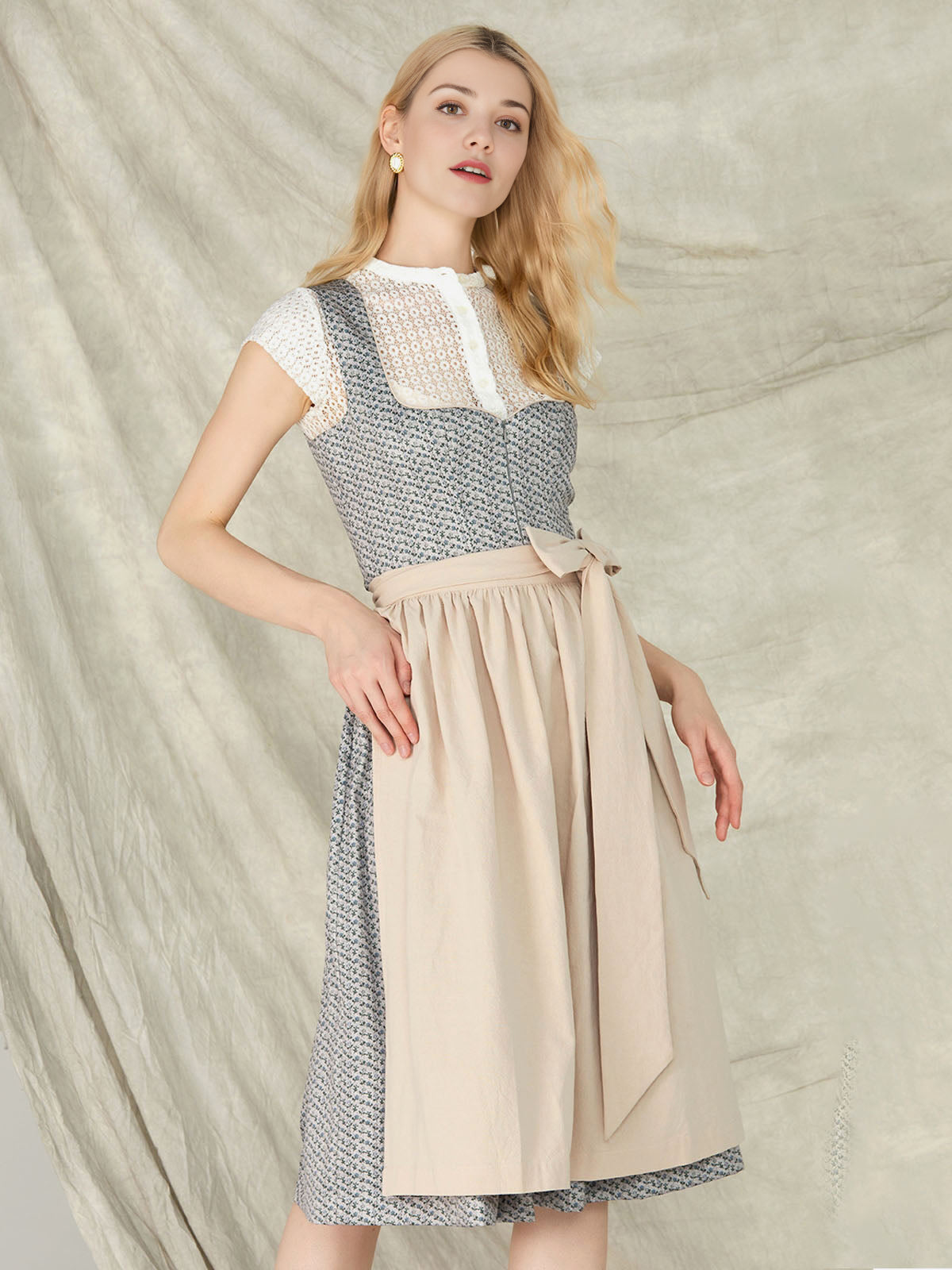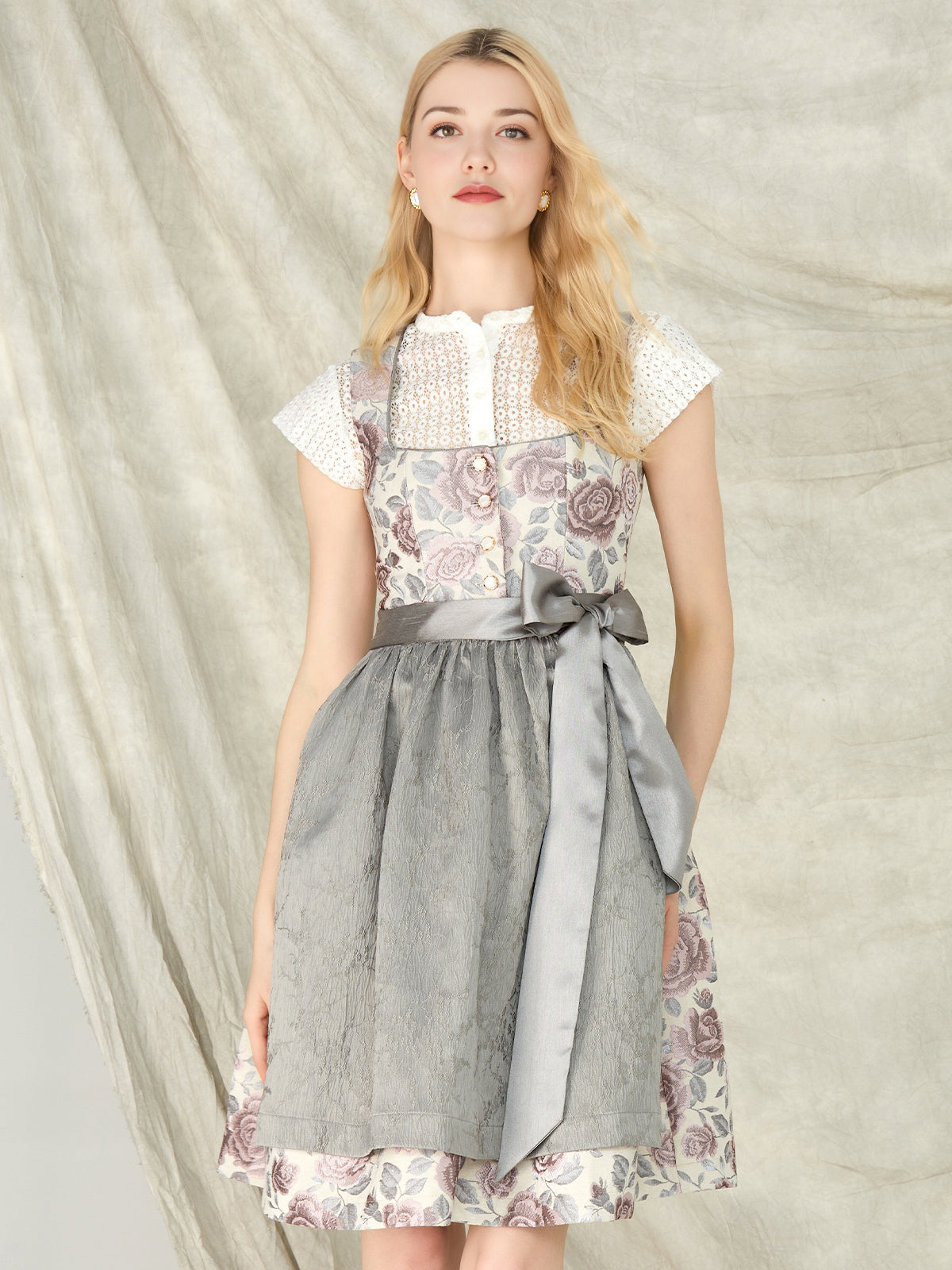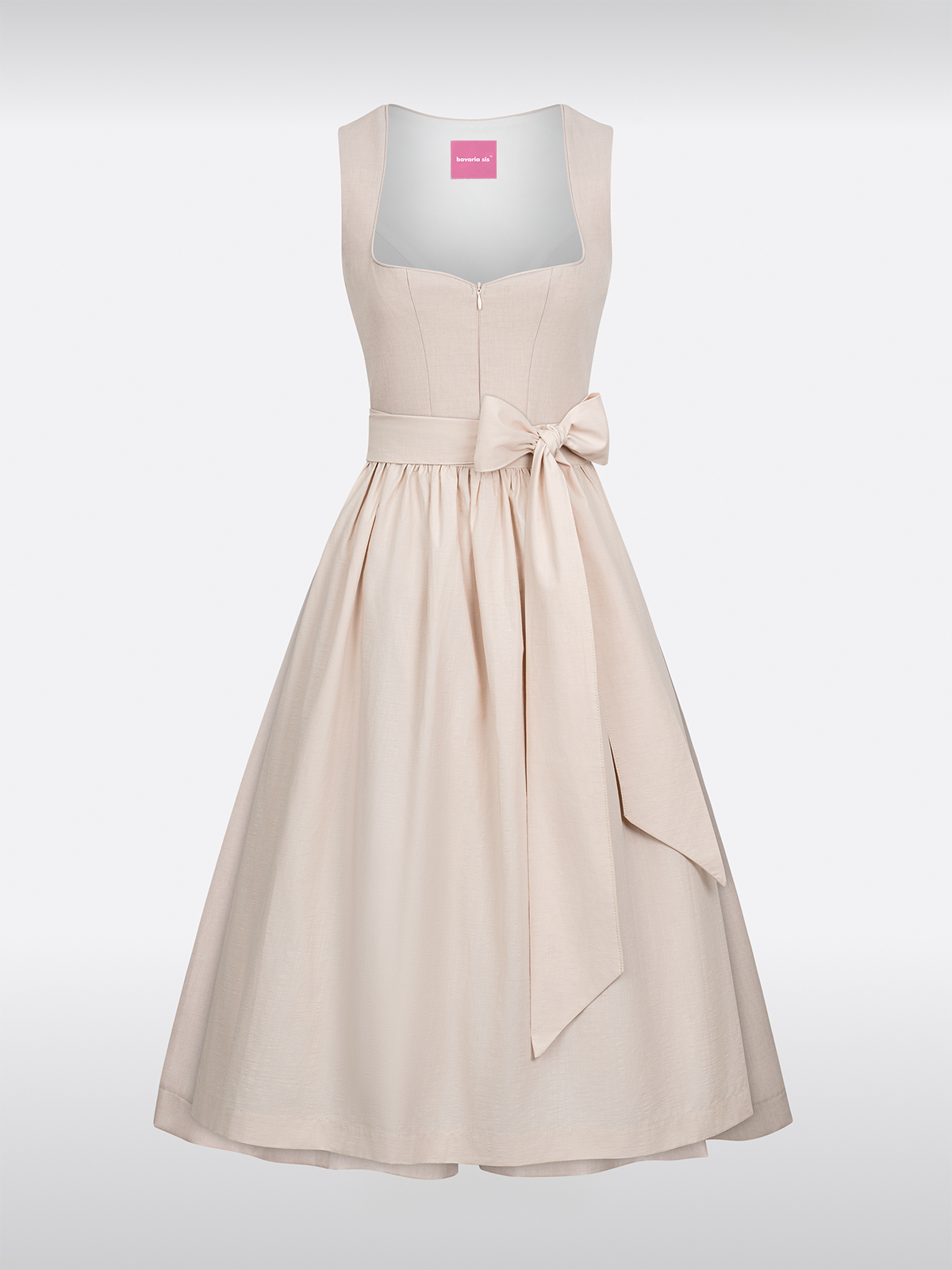I. Beginnings in the 17th century: The birth of the work robe
In the Salzburg hinterland, the dirndl originated as a practical workwear for peasant women. Made of rough linen, with a wide skirt and adjustable apron, it allowed freedom of movement during field work. But already in the late 17th century, a revolutionary transformation began: aristocratic ladies discovered the "country house style" for themselves. purple dirndl-Fabrics and puff-sleeved blouses, they transformed the simple traditional costume into a fashion statement.
From here, the cult of the “lilac dirndl” tones began – a color concept that still shapes the seasonal palettes today.
II. 19th Century: From Folk Art to National Ideology
The Biedermeier period helped the dirndl achieve its cult status. Poets like Annette von Droste-Hülshoff sang of the "simplicity of the Alps," while fashion editors in Vienna and Munich refined the silhouette:
- Bow details on the décolleté signaled the marital status
- Taffeta skirts with crinoline support enhanced the feminine character
- Dirndl lilac accents in embroidery symbolized the connection to nature
But in 1933 the garment was to become an instrument of propaganda.
III. Nazi era: political instrumentalization
Under Gertrud Pesendorfer, the “Trachtenführerin” of the Third Reich, the dirndls underwent radical changes:
- Skirt lengths were shortened to just above the knee (“To emphasize the Aryan dynamism”)
- Purple dirndl fabrics were replaced by military gray tones
- Jewish seamstresses were systematically excluded from the production process
This dark chapter casts a shadow over traditional costume to this day – an aspect that designers like Prada consciously addressed in 2019.
IV. Prada 2019: The Neo-Dirndl Revolution
In her spring/summer collection, Miuccia Prada integrated central elements of traditional costume:
- puff made of transparent organza, combined with nylon cargo pants
- Square cutouts in pastel dirndl lilac-Nuances
- Metallic belts as a homage to the Bavarian costume tradition
Reactions were polarized: While conservatives lamented the “loss of authenticity,” fashion insiders celebrated the reinvention as “postmodern folk art.”
V. 2025: The future of traditional costumes reflected in Semrush trends
According to the 2025 SEO Trends Report by Semrush, three developments will shape the dirndl:
- AI-supported designs: Generative algorithms create individualized patterns that traditional dirndl lilac-Combine florals with cyberpunk elements
- Sustainable materials: Mushroom leather and recycled silk replace conventional fabrics
- Hyperlocal collections: small series that reflect regional dialect variations in the cut
A look at the current fashion weeks shows: The future belongs to the dirndl, which moves between tradition and avant-garde.

